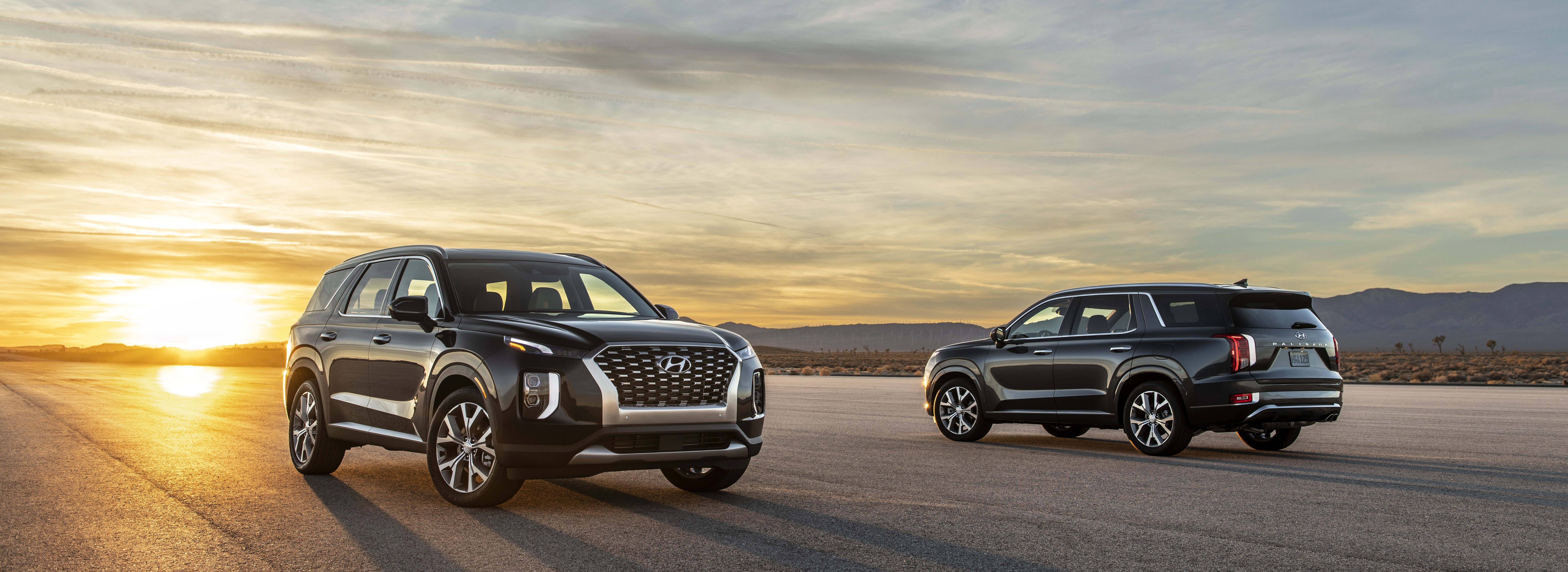
LA Auto Show: White Space Crossovers
Brands are eager to fill out their CUV lineups.
By Randy Lioz, Editor, Car-ED.com | December 2018
Sport utilities, particularly crossover vehicles on car-based platforms (as opposed to rugged truck-based SUVs), have continued to take over the passenger car market. By the end of October of last year, automakers had sold 15% more utilities than cars. Over that same period this year that advantage has grown to 42%!
There’s no sign of this trend abating, which means that the industry continues to pour resources into developing new utilities to fill every possible niche. But good ideas are contagious, so there are definitely plenty of commonalities in the vehicles that are hitting the market. At the 2018 Los Angeles Auto Show there were several brand new utilities on display that buyers should check out.
The first two that we’ll highlight have similar missions for their brands. The Chevrolet Blazer and Honda Passport each revive names from the past that recall the era in which SUVs first started to gain prominence. The original Blazer and Passport were 5-seater midsized truck-based SUVs, competitors to the popular Ford Explorer and Nissan Pathfinder from the ’90s. These new-for-’19 models follow a similar formula, in that they’re midsized and ready for the dirt trails, though both are car-based, which allows for better space and fuel efficiency.
The third vehicle that deserves attention in this group is the new Hyundai Palisade. Hyundai’s CUV lineup is already fairly extensive, with the subcompact Kona, the compact Tucson, the 2-row midsized Santa Fe and the 3-row midsized Santa Fe XL. But the latter entry isn’t quite big enough to fully compete with the biggest competitors in the segment, so Hyundai is upping the ante in terms of size and amenities.
So let’s take a look at each of these vehicles individually to see where it fits into the lineup and what it offers to entice you to take one home.
2019 Chevrolet Blazer
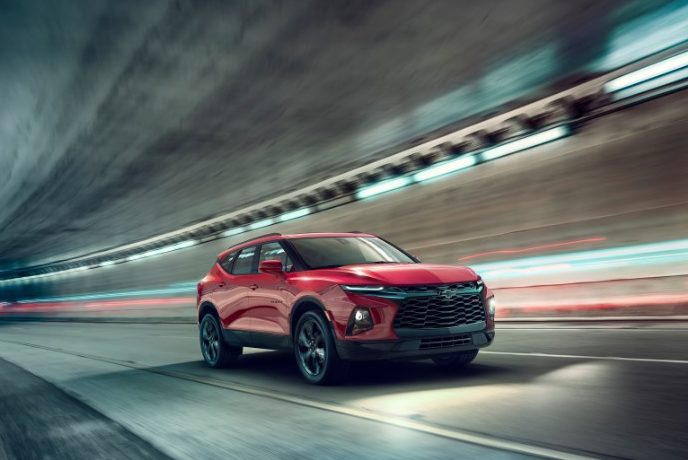
The Blazer wiggles its way in between the Equinox and Traverse in Chevy’s lineup. Pricing is much closer to that of the Traverse, as both vehicles are considered mid-sizers. The biggest tell in this regard tends to be width, and the Blazer has more room for you to stretch out in every row than the compact Chevy Equinox. Still, the Traverse remains bigger in every dimension, which is not surprising given that it’s the behemoth of the 3-row CUV segment.
The Blazer’s dimensions fit right into the competitive set, which includes the Ford Edge, Nissan Murano and Jeep Grand Cherokee, with just a few inches difference in any given measurement. The pricing is also competitive, with the basic Blazer L model sliding in just under $30,000, whereas the rest of the competitors fail to hit that mark. Ford gets close, with a price of $30,310 on the Edge SE, while the Murano and Grand Cherokee each start over 32 grand.
When it comes to style, you may notice some similarities with one of Chevy’s venerable sports cars, the Camaro.
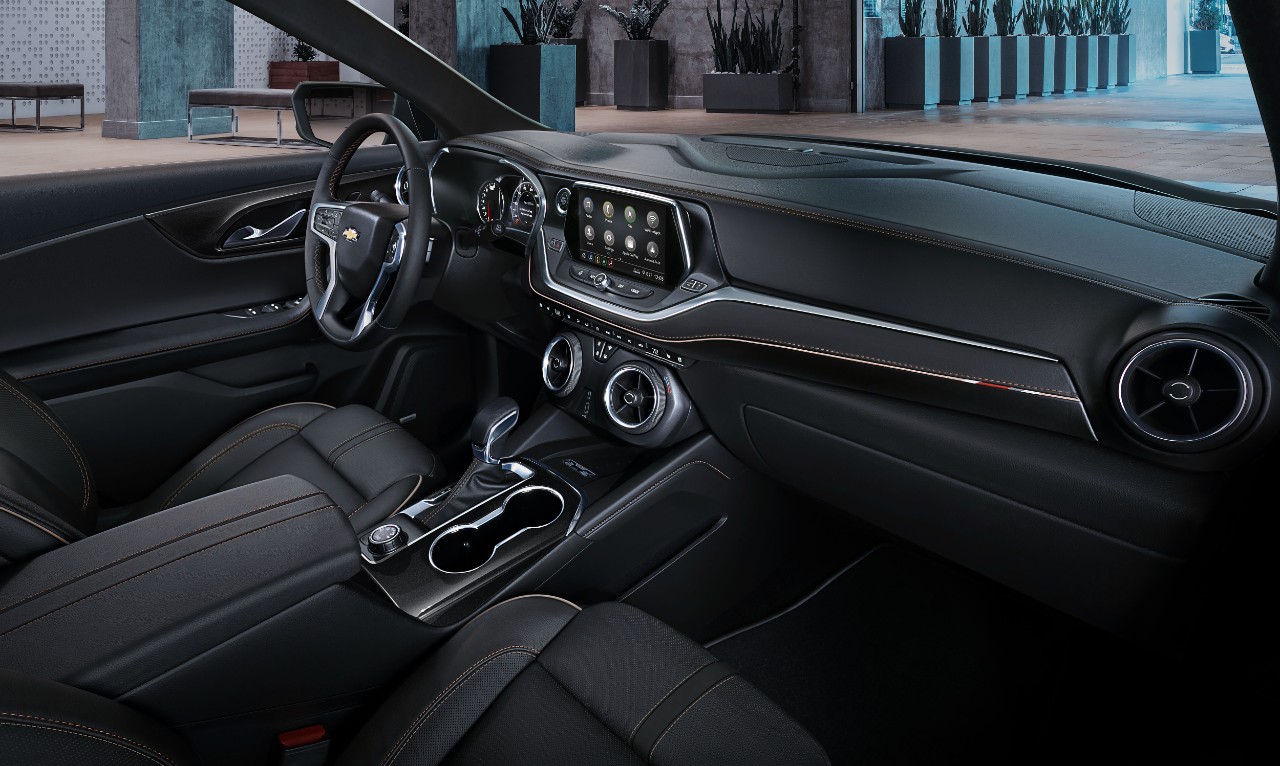 Shad Balch, from Chevy communications, called the Blazer “what a Camaro would turn into if it were to be a crossover,” citing aspects like the wide stance and various interior design elements, like the large, circular vents—you can turn the bezels to adjust the temperature—and even the way the infotainment screen perches atop its ledge on the dash.
Shad Balch, from Chevy communications, called the Blazer “what a Camaro would turn into if it were to be a crossover,” citing aspects like the wide stance and various interior design elements, like the large, circular vents—you can turn the bezels to adjust the temperature—and even the way the infotainment screen perches atop its ledge on the dash.
The exterior certainly echoes the sinister glower of the Camaro’s fascia, with the Blazer’s face taking on an even more squinty countenance due to the fact that its LED daytime running lights (DRLs) sit alone under the hood, while the headlights are situated in the middle of the bumper area making them look like fog lights. This trick was previously used on vehicles like the Nissan Juke and the Jeep Cherokee, when it returned to the market in 2013. The Juke is gone, and Jeep saw fit to reverse this decision when the Cherokee was redesigned, indicating that the look was a bit awkward for some buyers, but Chevy seems to have pulled it off more successfully with the Blazer.
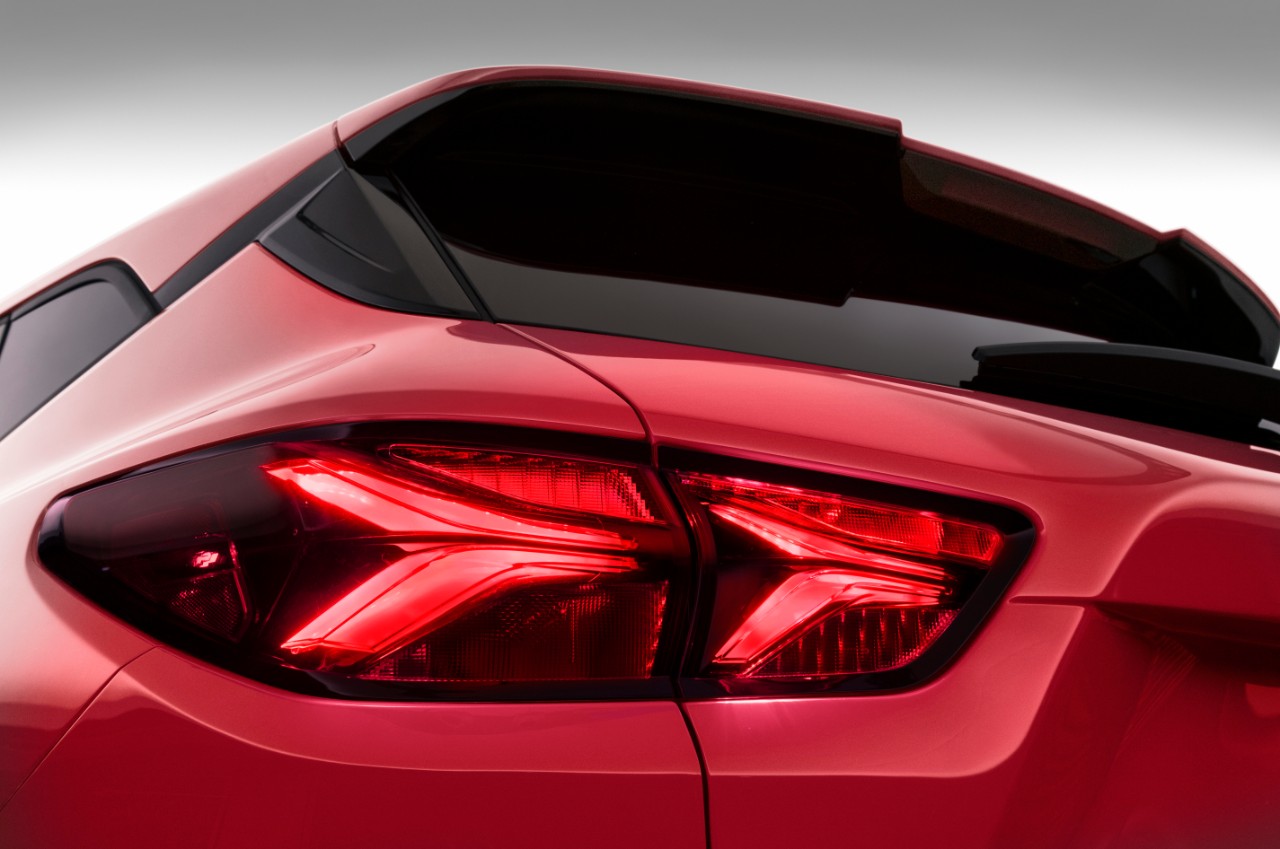
The Blazer truly does look more aggressive than its Chevy stablemates, with those DRLs flanking a more upright grille, and a more sculpted bodyside that emphasizes prominent fenders. The side view is given extra visual interest by its floating roof concept—which has become all the rage these days—that lends a sweeping line the cuts through the door handles. And the chrome-lined bumper exhaust outlets sit under tail lamps with a split Y theme that recalls Lamborghini design.
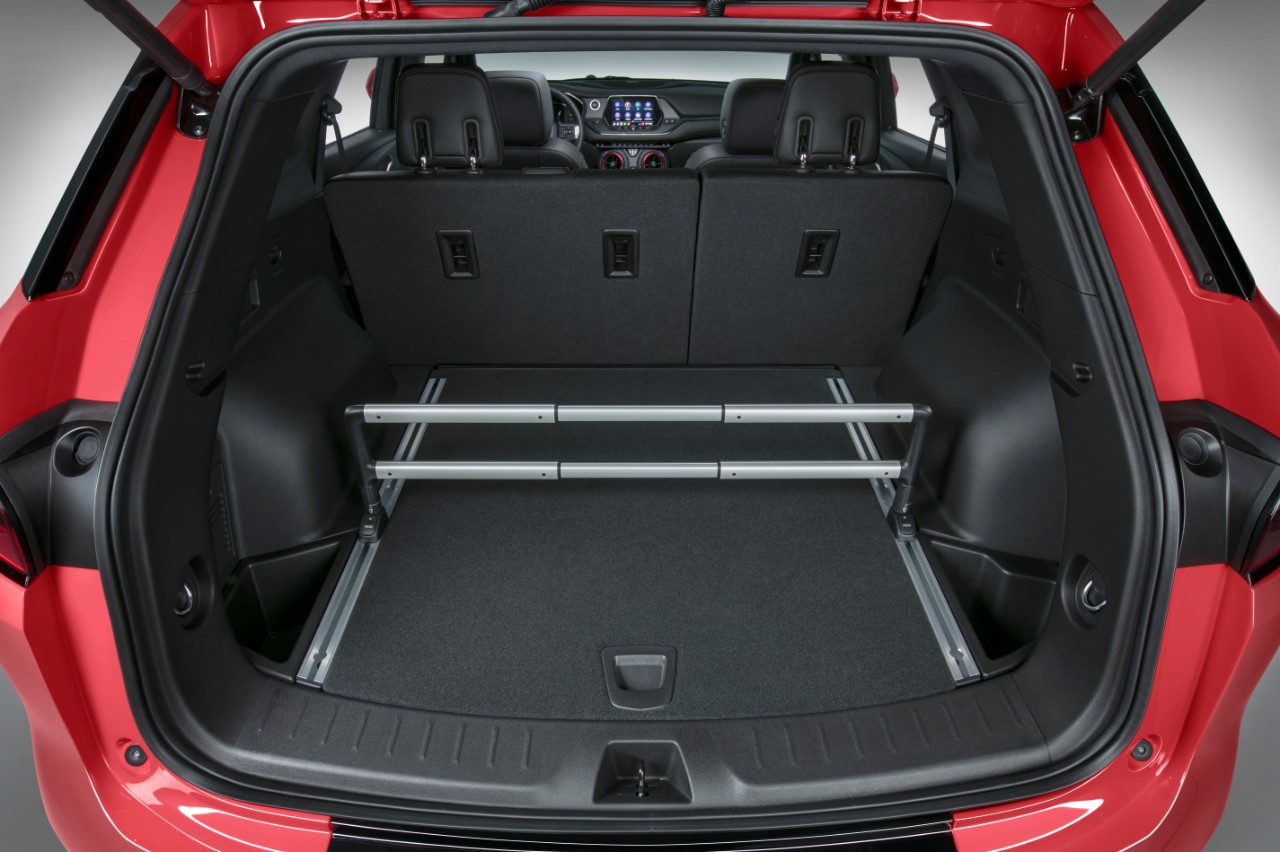
The Blazer’s style seems well-executed to compete against the current crop of mid-sizers, like Edge and Murano, which fall distinctly on the sporty end of the spectrum, especially in Chevy’s style-focused RS trim, with its blacked out grille and dark wheels. This trim and the Premier will likely make up most of the Blazer’s sales, and they’re equipped well, with an enhanced infotainment system, a gorgeous 8″ instrument cluster screen, and Chevy’s trick cargo management system, which gives you a sliding barrier that can help you keep your stuff in place in wayback. They also come standard with lane change, side blind zone, and rear cross traffic alerts, and rear park assist, plus the power liftgate.
Even the base model is equipped fairly well, with the 8″ touchscreen, keyless operation, 4G LTE WiFi and GM’s innovative rear seat reminder feature that’ll keep you from forgetting the baby or dog when you leave the car (it happens!). The base L model comes with 18″ wheels, though they get bumped to 20″ for the RS or Premier.
That sub-$30k price point on the L model is aimed at harnessing the crosswinds flowing from cars to SUVs.
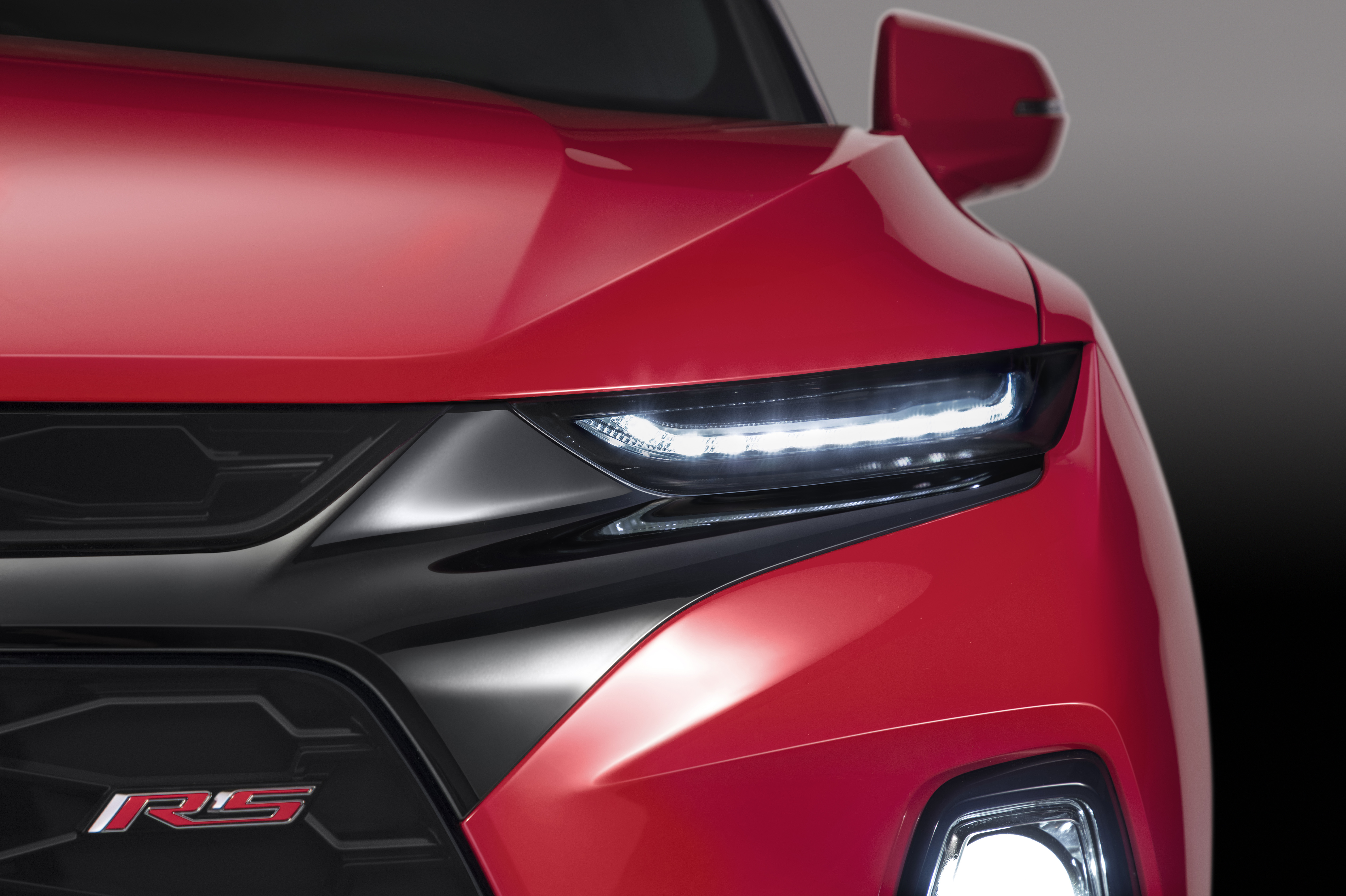
“We’re using this vehicle to attract folks from smaller crossovers or cars,” says Balch, and those exiting the car market will still get a big measure of style in the bargain. But Chevy wants them to also fully enjoy the benefits of SUV ownership, so as you move up the price ladder the Blazer gets some sophisticated equipment for both trailering and dealing with rough weather conditions.
First of all, the Blazer can handle up to 4,500 lbs. of trailer weight on 3.6L V-6 models, and it offers a guidance feature through the infotainment that helps you hook it up. The AWD system is upgraded on the RS and Premier, with a fancy dual clutch that makes the vehicle quicker to adapt to adverse road conditions. Any of the AWD systems comes with a Traction Mode Select dial that lets you pick your terrain settings.
The V-6 (305 hp) is an upgrade from the base 2.5L four-cylinder (193 hp), that you can step up to as you go through the LT models in the middle of the lineup. Both engines are mated to fuel-efficient 9-speed auto transmissions, though fuel economy ratings haven’t been released yet.
The Blazer goes on sale early next year. The front-wheel drive L trim starts at $29,995 with destination, while an AWD Premier model will run you $46,795 before loading up any more options.
2019 Honda Passport
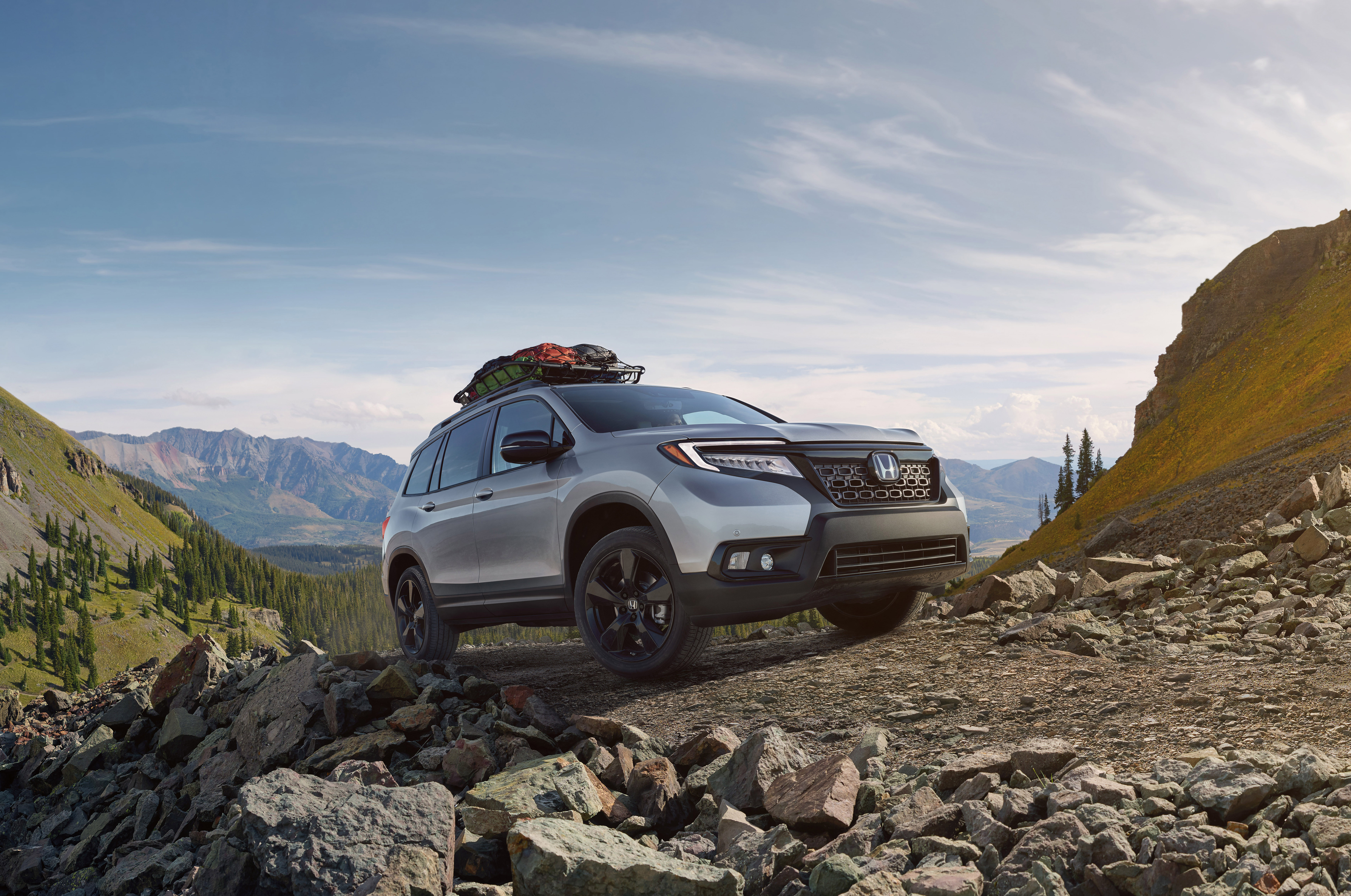
Slightly further along the continuum toward a true off-roader is Honda’s new Passport, which like the Blazer slots into the 2-row midsize segment between existing compact and 3-row mid-sizers. It resides on the same platform as the Pilot, and in fact is the same width as that 3-row model, but the Pilot has 4″ of additional length on the Passport.
Pricing hasn’t yet been revealed, so it’s difficult to get a handle on the Passport’s exact positioning within the lineup, but we expect it to be a bit above that of others in the segment like Edge and Blazer due to equipment levels. The Pilot starts around $1,000 above the Chevy Traverse and a little more than $1,000 below the Ford Explorer, to lend a frame of reference to the pricing question. But in terms of the types of buyers Honda is looking for with the Passport, they’re ideally “adventure-minded” folks who actually do want some legit off-road capability, says Lara Harrington, the vehicle’s chief engineer and development leader.
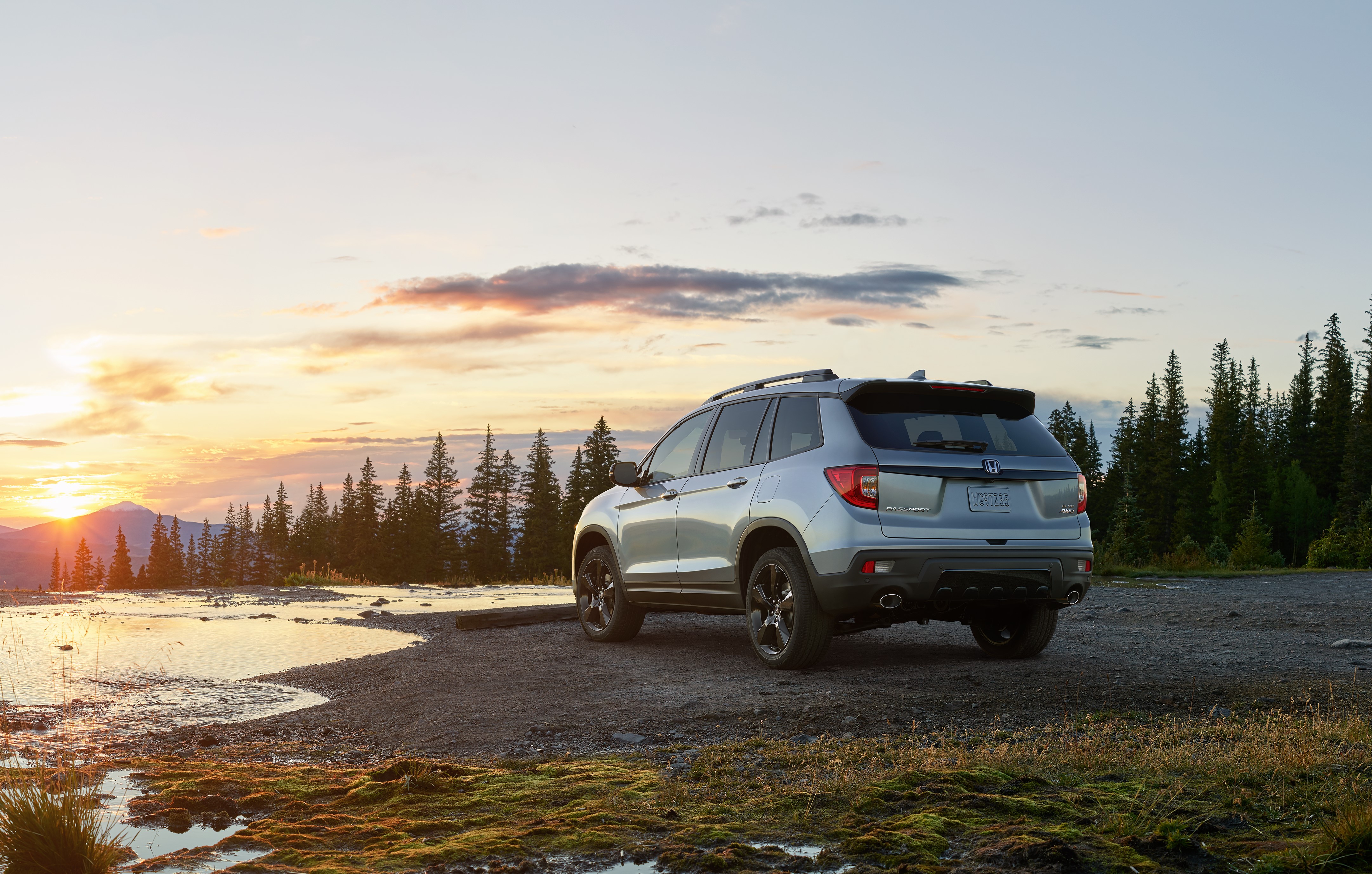
She pointed out the Passport’s scratch-resistant body cladding, and its 1″ ride height advantage versus the Pilot, as well as the fact that it can haul up to 5,000 lbs. with AWD, which is quite strong for the segment. The Passport also has Honda’s i-VTM4 torque-vectoring all-wheel drive and an Intelligent Traction Management system with four modes to make playing in the sand a snap, and indeed the company did extensive testing in sand dunes and muddy and snowy trails to make sure it was up to snuff.
“For us in particular this was a void,” she says, indicating that Honda doesn’t really have a vehicle that projects much off-road imagery the way, say, a Jeep Grand Cherokee or Toyota 4Runner does. Even Ford, whose Explorer still has some rugged cred in the minds of consumers, has recognized an appetite for this type of vehicle, and plans to reintroduce the Bronco, in 2020, as a midsized off-roader more in the vein of the original model from the 1960s than the full-sized 2-door infamously associated with O.J. Simpson.
While she said that the Ford Edge and Nissan Murano were the primary targets of the Passport, Harrington confirmed that the Grand Cherokee and 4Runner were very much on Honda’s radar with this vehicle.
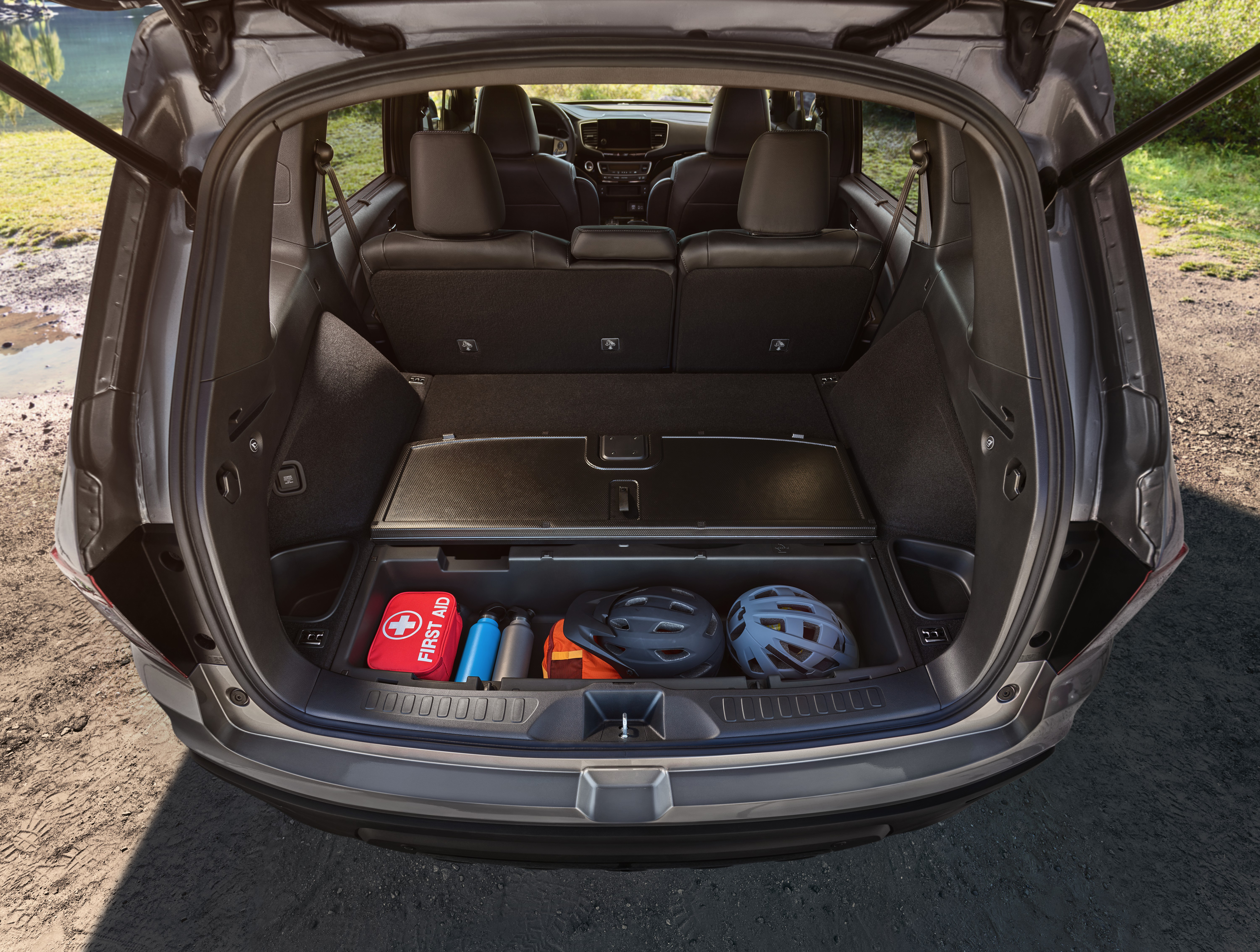
She called out some attributes of the Passport specifically aimed at the “active” set, like a hatch opening and cargo area that are sized to accommodate a bike or an “average-sized” dog crate. Harrington also pointed out the sophisticated approach to underfloor storage, which is compartmentalized into two different areas, with an easy-access door at the rear of the cargo area that holds the stuff that you want hidden but readily available. Further forward is another compartment that resides next to the nicely sized spare, which is inverted, allowing for a bit more junk to be thrown inside.
Honda is clearly proud of the usable space available throughout the Passport, and even lists on their website a cargo volume figure that adds to the standard Society of Automotive Engineers-defined metric of storage behind the first row (with the second row folded) the “floor space between seating rows and seats in their forward-most and upright position.” With this extra calculation Honda notes that you can increase your cargo space from 77.9 cu. ft. to 100.7. And you can fold down that second row with buttons in the back of the cargo area, making the conversion a cinch.
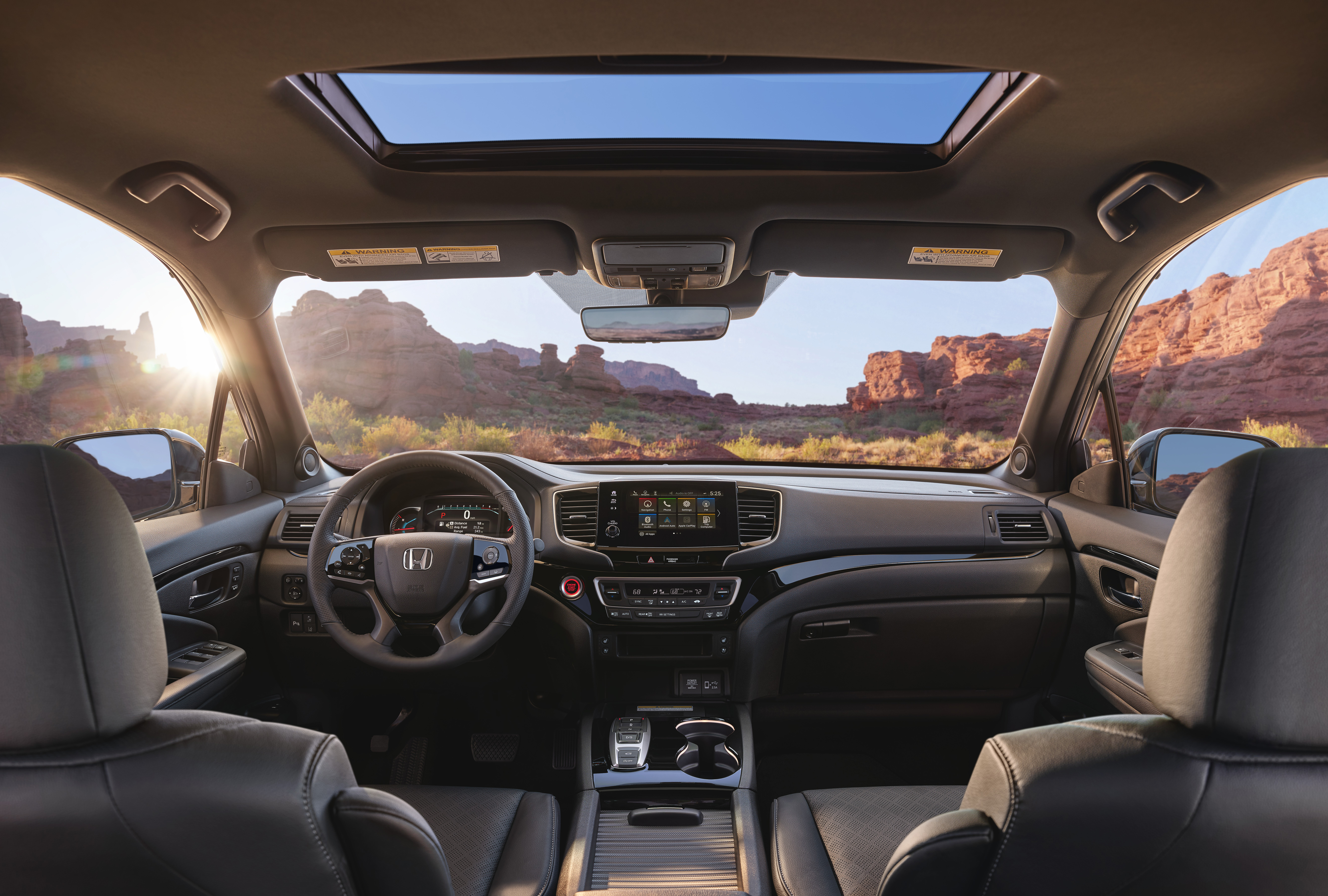 The Passport comes standard with a 284-hp V-6 engine, paired to a 9-speed automatic. Every Passport rides on 20″ wheels, and Honda’s impressive Honda Sensing suite of advanced safety tech is standard across the board. Honda isn’t quite as aggressive as Chevy with the infotainment tech, though, so to get the 8″ Display Audio screen you’ll need to opt up to the EX-L trim, where you can also get WiFi, nav and wireless phone charging.
The Passport comes standard with a 284-hp V-6 engine, paired to a 9-speed automatic. Every Passport rides on 20″ wheels, and Honda’s impressive Honda Sensing suite of advanced safety tech is standard across the board. Honda isn’t quite as aggressive as Chevy with the infotainment tech, though, so to get the 8″ Display Audio screen you’ll need to opt up to the EX-L trim, where you can also get WiFi, nav and wireless phone charging.
Honda tends to play it close to the vest when it comes to info on its new models, so pricing isn’t out yet, but you can check the vehicle out on the website ahead of its early-2019 debut.
2020 Hyundai Palisade
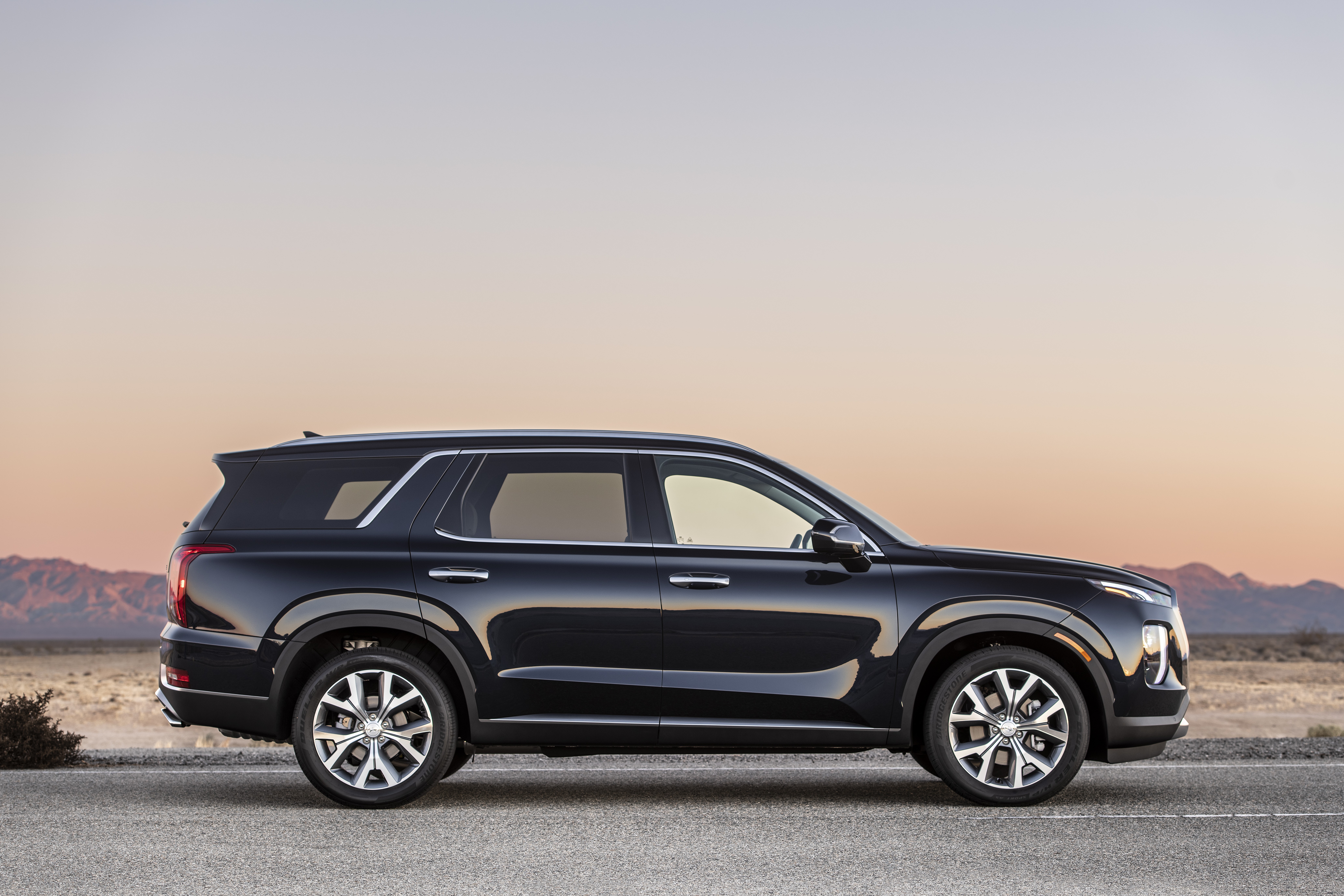 Hyundai’s new white-space filler slots into a different place within its lineup from the new entries from Chevy and Honda. Hyundai already has the midsized two-row segment covered—though at $26,545 to start the 2019 Santa Fe is definitely the value player among the entries. No, we’re talking here about the upper end of the crossover continuum, with three rows and plenty of cargo room and luxury.
Hyundai’s new white-space filler slots into a different place within its lineup from the new entries from Chevy and Honda. Hyundai already has the midsized two-row segment covered—though at $26,545 to start the 2019 Santa Fe is definitely the value player among the entries. No, we’re talking here about the upper end of the crossover continuum, with three rows and plenty of cargo room and luxury.
The 2020 Palisade represents Hyundai’s effort to strike directly at the top of the non-luxury food chain, with seating for eight and a significant bump in cargo space from the 2019 Santa Fe XL that it replaces, plus premium features and a pricing ladder that’s likely to be more ambitious than that of any Hyundai since the Genesis luxury car.
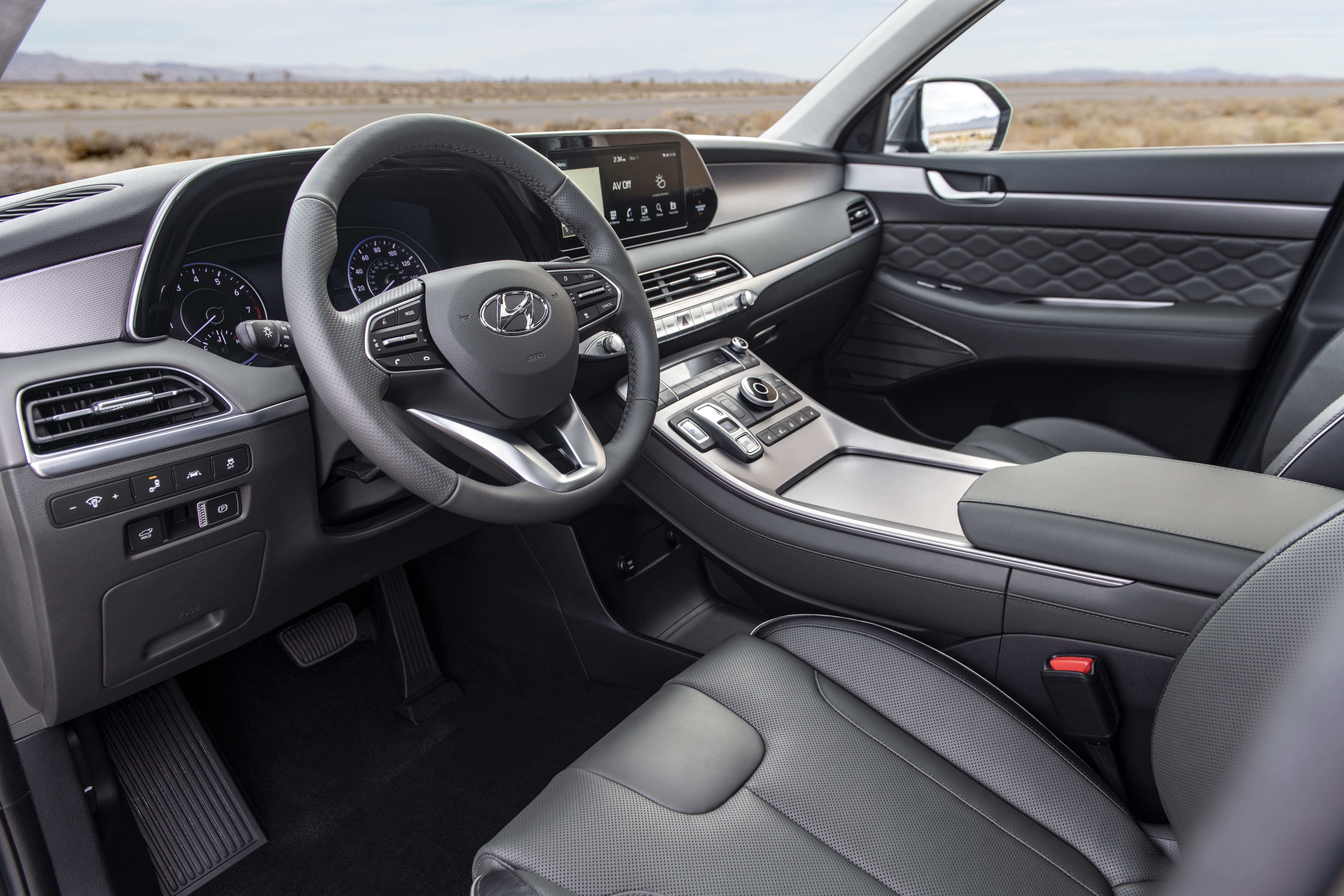 First, a quick history of Hyundai’s utility lineup, since it can get confusing. As Hyundai’s first crossover, the Santa Fe, grew from a compact to a midsized model, the Tucson was slotted underneath for 2005. Two years later the 3-row Veracruz was added at the top of the lineup. But the brand still valued the recognition that its Santa Fe enjoyed, so for 2013 it reworked the lineup, introducing two versions of the Santa Fe to fill the midsize segments. The old Santa Fe’s spot was filled by the 2-row Santa Fe Sport, while the Veracruz was replaced by a 3-row just called the Santa Fe. The 2018 Kona finally filled the subcompact utility segment, but for 2019 the brand reshuffled the larger entries again, with the Santa Fe Sport being replaced by an all-new 2-row vehicle that is once again just called the Santa Fe. The 3-row entry was carried over, with the only thing changing being the addition of “XL” to the end of its name, but that will give way to the Palisade next summer. See? Simple. Okay, not really, which is why we’ve included this handy flowchart.
First, a quick history of Hyundai’s utility lineup, since it can get confusing. As Hyundai’s first crossover, the Santa Fe, grew from a compact to a midsized model, the Tucson was slotted underneath for 2005. Two years later the 3-row Veracruz was added at the top of the lineup. But the brand still valued the recognition that its Santa Fe enjoyed, so for 2013 it reworked the lineup, introducing two versions of the Santa Fe to fill the midsize segments. The old Santa Fe’s spot was filled by the 2-row Santa Fe Sport, while the Veracruz was replaced by a 3-row just called the Santa Fe. The 2018 Kona finally filled the subcompact utility segment, but for 2019 the brand reshuffled the larger entries again, with the Santa Fe Sport being replaced by an all-new 2-row vehicle that is once again just called the Santa Fe. The 3-row entry was carried over, with the only thing changing being the addition of “XL” to the end of its name, but that will give way to the Palisade next summer. See? Simple. Okay, not really, which is why we’ve included this handy flowchart.

Okay, so now you know where the Palisade fits into the landscape. Let’s talk about what it brings to that space.
The Palisade starts with bold styling all around, sporting an upright front end with a prominent grille flanked by a vertical lighting theme, which is echoed in the rear. Like the Blazer the Palisade pulls a switcheroo with its headlights, situating them lower in the front fascia where one might expect to see fog lamps. Hyundai has been rolling out similar looks in its other crossovers, like the Kona and Santa Fe, though the Palisade links the upper DRLs and headlamps with the vertical theme.
The vehicle’s stance is quite upright, with very little taper to the side glass, something not seen as much these days outside of a full-sized Range Rover. This design also helps to lend the Palisade plenty of headroom and interior space, though it’s not quite as generous as the biggest competitors in the segment, like Chevy Traverse.
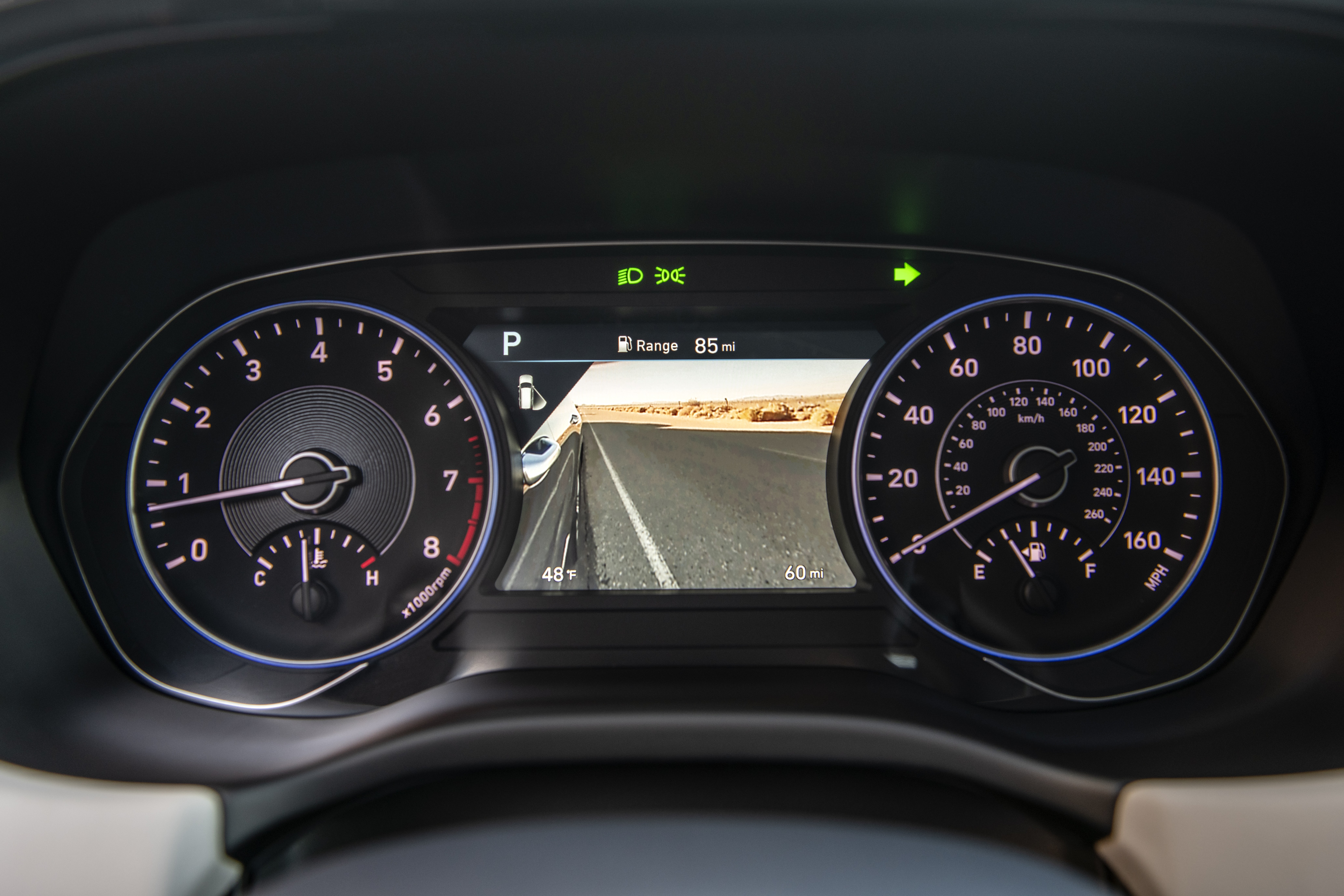 Inside the Palisade is packed with tech, starting with its screens. Atop the dash sits a 10.25″ central nav screen, and every model sports a digital gauge cluster that can do cool tricks like displaying the Blind View Monitor image down the side of vehicle, which pops up whenever a turn signal is engaged. This can be augmented by an optional heads-up display. And the infotainment system can do its own tricks like connecting to two phones at once, so the driver doesn’t have to disconnect for her passengers to join the fun. Naturally it also includes Apple CarPlay and Android Auto, plus wireless charging.
Inside the Palisade is packed with tech, starting with its screens. Atop the dash sits a 10.25″ central nav screen, and every model sports a digital gauge cluster that can do cool tricks like displaying the Blind View Monitor image down the side of vehicle, which pops up whenever a turn signal is engaged. This can be augmented by an optional heads-up display. And the infotainment system can do its own tricks like connecting to two phones at once, so the driver doesn’t have to disconnect for her passengers to join the fun. Naturally it also includes Apple CarPlay and Android Auto, plus wireless charging.
The rear seat passengers are treated particularly well in the Palisade, with an A/C vent system that’s quieter, with easier to control airflow. And cranky passengers can get some quiet rest, since Hyundai takes a feature that Honda pioneered, a cabin intercom system, and improves upon it, allowing the driver to speak to either row while keeping the other row quiet. The audio system can pull the same trick, or even keep the audio just in the front.
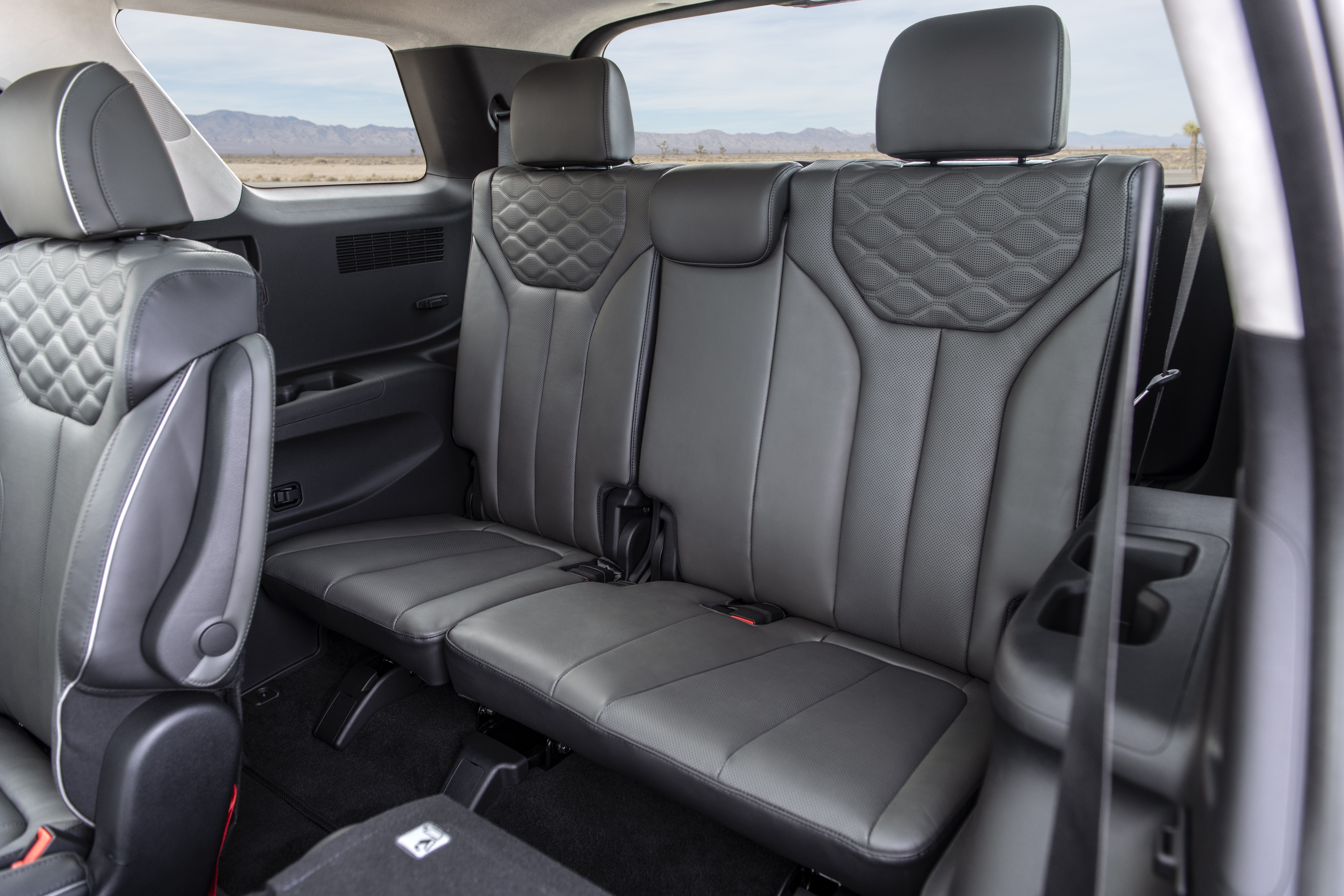 The Palisade also has an available power-folding third row, a feature that’s rare in this segment.
The Palisade also has an available power-folding third row, a feature that’s rare in this segment.
The standard 3.8L V-6 engine offers 291 hp, among the tops in its class—only the Chevy Traverse offers more, but with its optional engine. Fuel economy is not yet published, but with the efficient Atkinson cycle that it uses, and the 8-speed auto it’s paired to, this engine should be very competitive.
One of the categories in which Hyundai is most aggressive with the Palisade is safety, with the full suite of SmartSense advanced active safety tech standard.
The list is quite impressive: Forward Collision-Avoidance Assist w/ Pedestrian Detection, Blind-Spot Collision-Avoidance Assist, Lane Following Assist, High Beam Assist (automatically controls brights), Driver Attention Warning (sensors that notice if the driver is distracted or sleepy), Safe Exit Assist (keeps the rear doors locked if a car is passing from behind), Smart Cruise Control with Stop & Go, and Rear Cross-Traffic Collision-Avoidance Assist. Rear Occupant Alert is also available, using sensors to detect if a child or pet has been left in the back seat.
Pricing will be announced closer to the vehicle’s market introduction next summer.
Other crossovers in LA
While there was a lot of activity in the mainstream space, there were plenty of interesting developments among luxury crossovers, too. Mercedes, BMW and Lincoln had significant new vehicles to show.
2020 Mercedes GLE
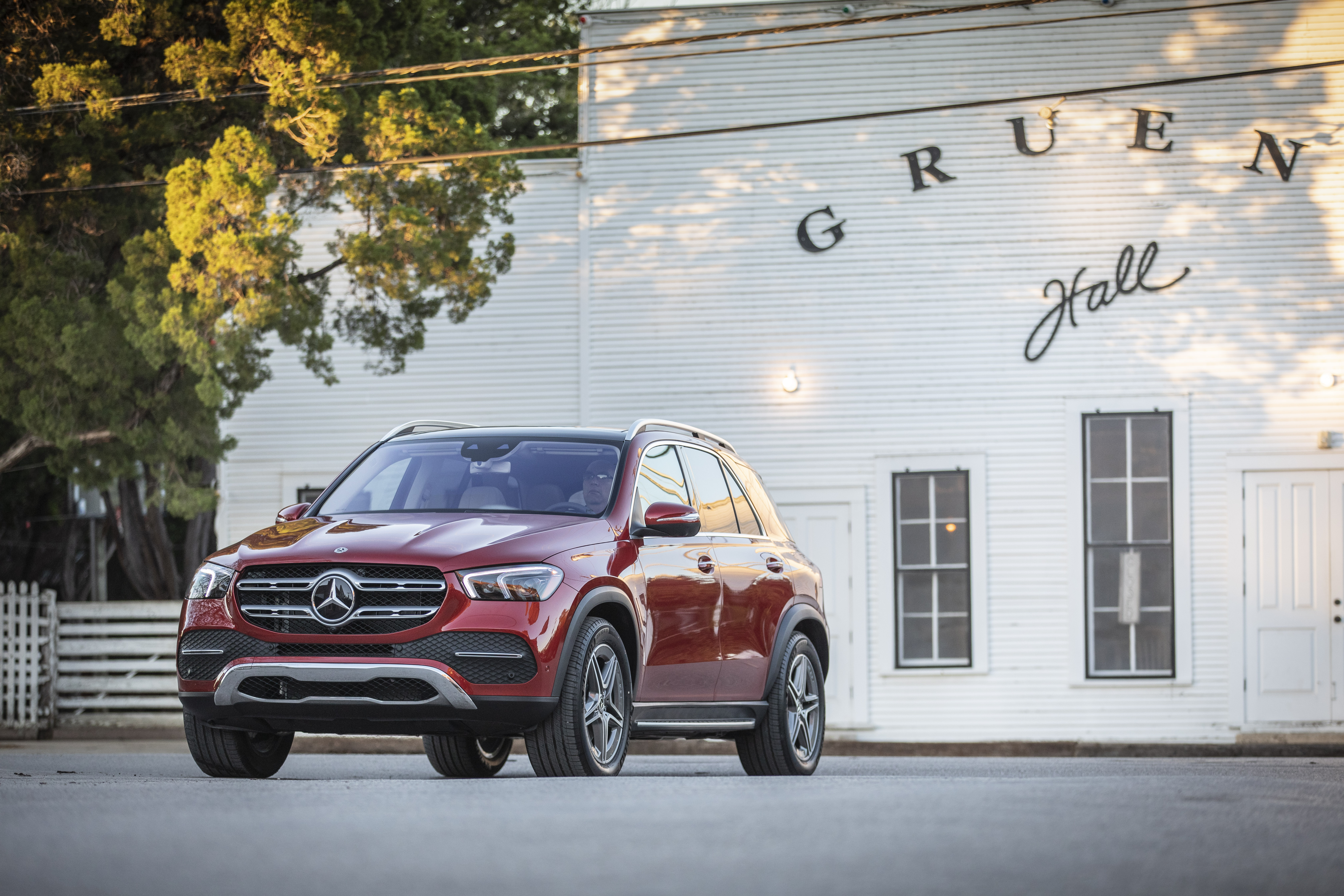
The GLE (formerly M-Class) is all-new, and its new 48-volt electrical system (conventional systems are 12 volts) enables some cool new features, such as the EQ Boost mild hybrid system, and E-Active Body Control, which not only provides an amazingly smooth ride, but by individually controlling the movements of each wheel, can even free the vehicle from being stuck in the mud or sand. Mercedes gave the press a demo of a dancing GLE, and one can imagine it two-stepping itself out of a jam.
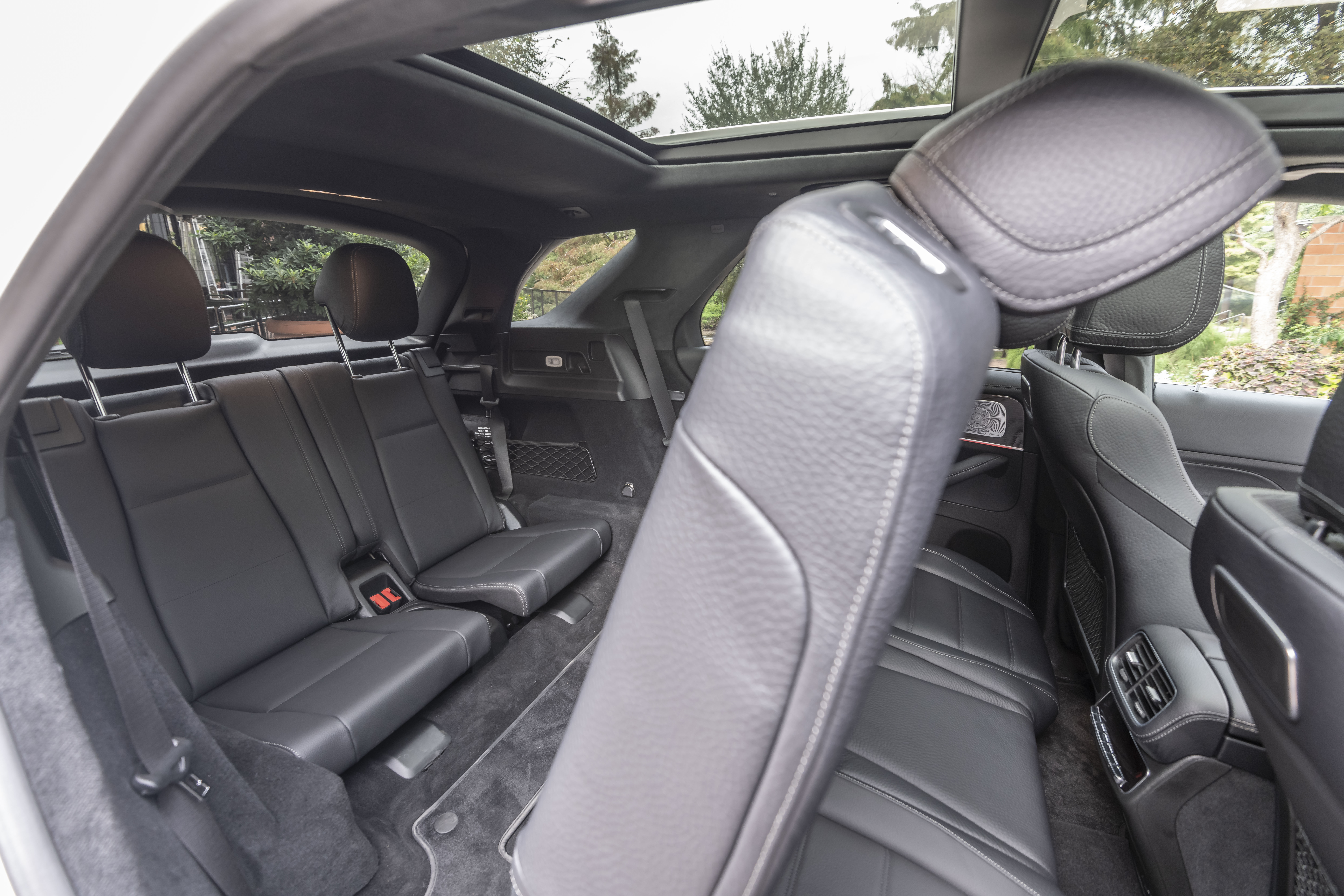
The final big news for GLE is its 3rd-row option, which means that Mercedes fans no longer have to pony up nearly $15,000 more for a GLS to achieve three-row status. The new GLE will launch next spring, and Mercedes announced a price of $53,700, which is $2,000 less than the current model, since it will be available with a turbo four-cylinder for the first time.
2019 BMW X7
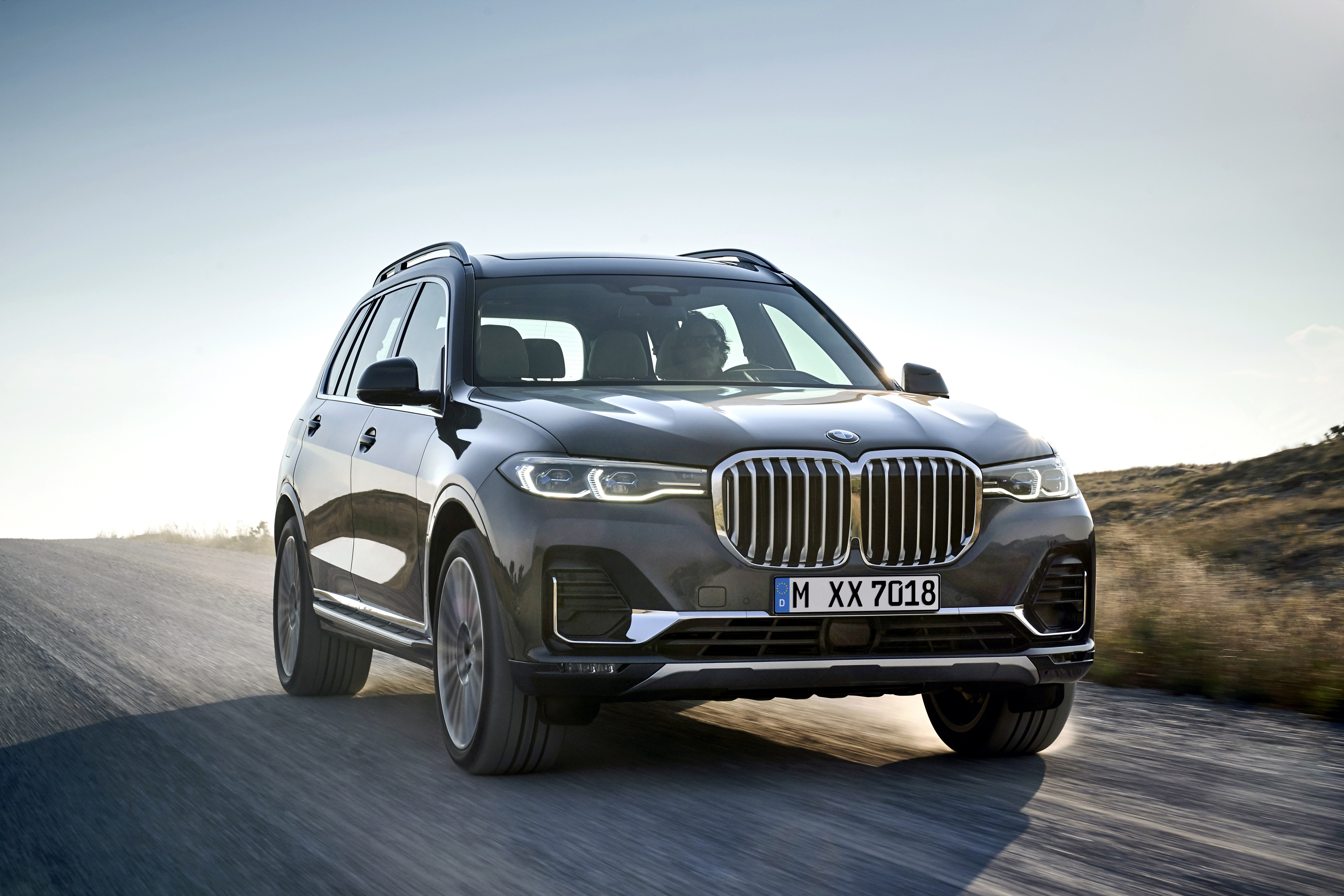 BMW showed not only the redesigned X5, which is available now, but also a new flagship utility, the X7, aimed straight at that Mercedes GLS, with room for seven standard. This largest-ever BMW sports the brand’s largest grille, a massive version of the double-kidney, and it comes with a standard air suspension and an available Panoramic Sky Lounge LED Roof, which has color-changing light elements embedded in the glass, for an incredible show.
BMW showed not only the redesigned X5, which is available now, but also a new flagship utility, the X7, aimed straight at that Mercedes GLS, with room for seven standard. This largest-ever BMW sports the brand’s largest grille, a massive version of the double-kidney, and it comes with a standard air suspension and an available Panoramic Sky Lounge LED Roof, which has color-changing light elements embedded in the glass, for an incredible show.
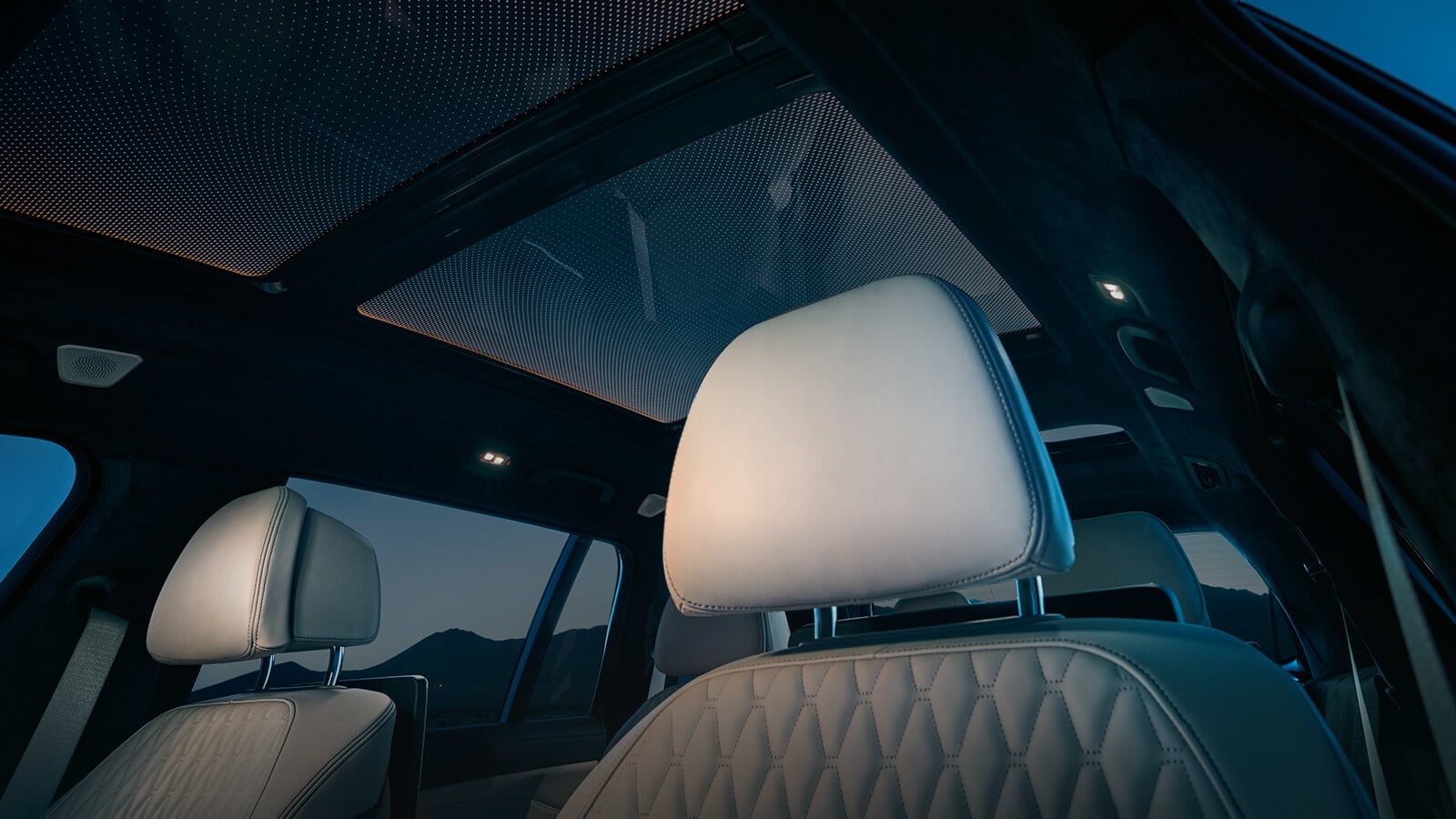 This vehicle is new for 2019, landing in showrooms in March, and it starts at $74,895 with destination charge, which is nearly four grand above a base Mercedes-Benz GLS, though the combination of a fresh new design and BMW’s reputation for sporty handling should line up plenty of takers, and the company announced it already had 1,500 preorders.
This vehicle is new for 2019, landing in showrooms in March, and it starts at $74,895 with destination charge, which is nearly four grand above a base Mercedes-Benz GLS, though the combination of a fresh new design and BMW’s reputation for sporty handling should line up plenty of takers, and the company announced it already had 1,500 preorders.
2020 Lincoln Aviator
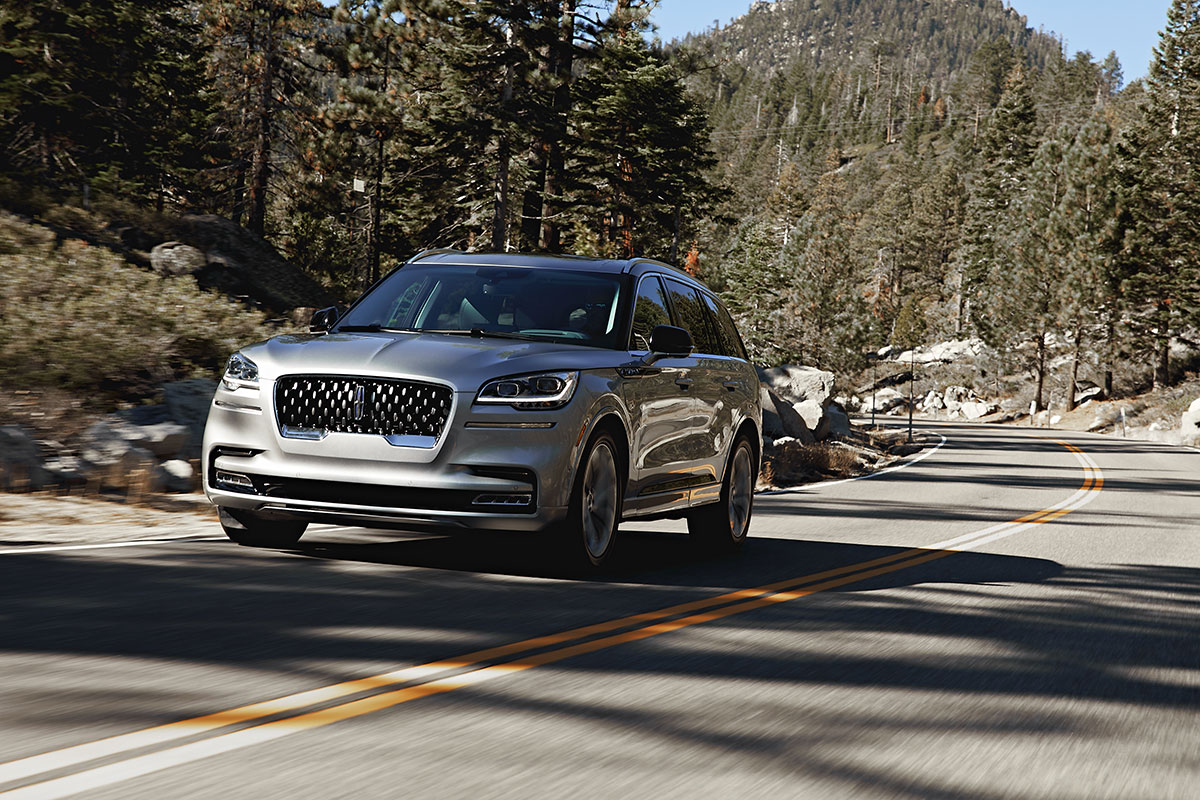 While Lincoln had tried to serve the three-row market with its enormous, truck-based Navigator, and the awkward looking MKT, which came from the Ford Explorer platform, it never quite had an answer to the hugely popular luxury segment represented by vehicles like the Audi Q7 and Acura MDX. Now, Lincoln hits the market with a more conventionally styled, but highly elegant new CUV that offers tons of tech features and refinement at what should be a fairly modest, Lincoln-like price.
While Lincoln had tried to serve the three-row market with its enormous, truck-based Navigator, and the awkward looking MKT, which came from the Ford Explorer platform, it never quite had an answer to the hugely popular luxury segment represented by vehicles like the Audi Q7 and Acura MDX. Now, Lincoln hits the market with a more conventionally styled, but highly elegant new CUV that offers tons of tech features and refinement at what should be a fairly modest, Lincoln-like price.
From the first approach to the vehicle, the Aviator delights owners with features like enabling your smartphone to be your key, and a four-corner air suspension that squats down for you to get inside more easily. That suspension even works with the camera system to make adjustments to oncoming road conditions, so you won’t be jarred by a nasty pothole.
It’s also packed full of high-tech driver aids, like Co-Pilot360 Plus, which includes a traffic jam assist feature that can allow it to drive itself in stop-and-go traffic, and a self-parking feature which works not just the steering, but also the throttle, which is less common among parking aids.
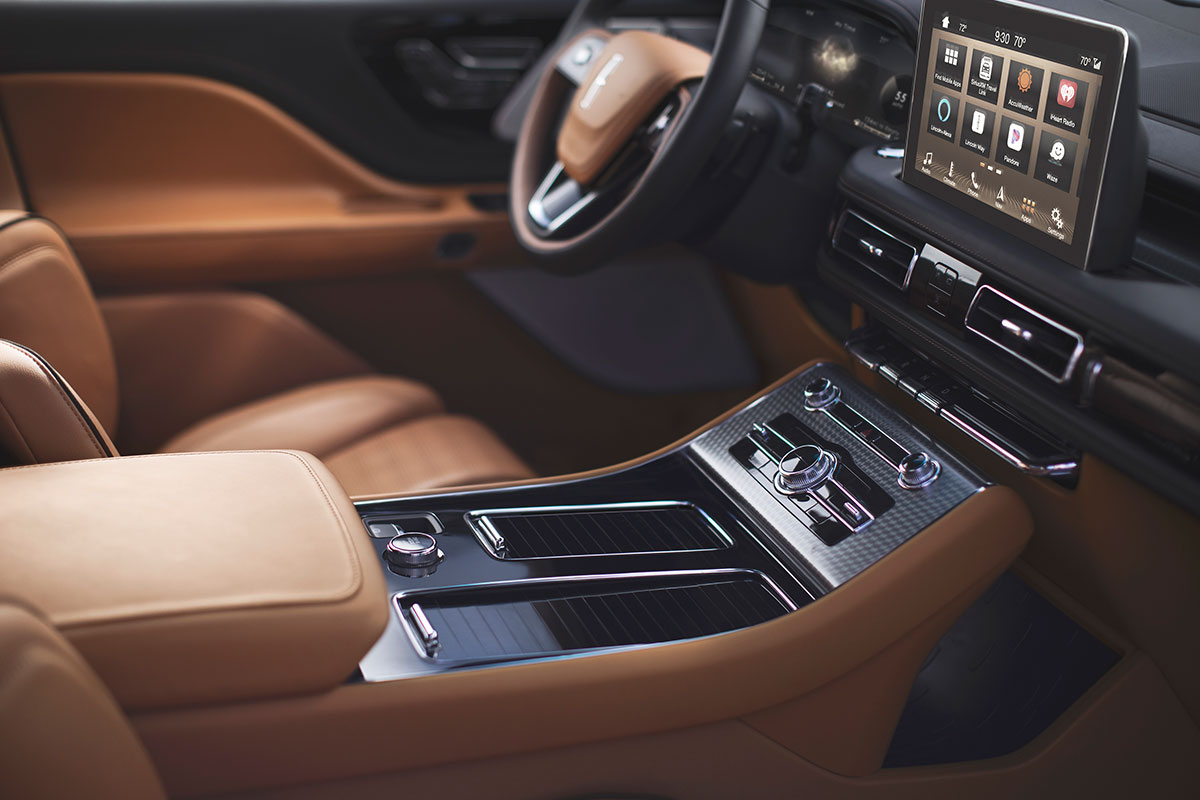 The Aviator comes standard with a turbo V-6 packing 400 hp and 400 lb-ft of torque, which is pretty incredible for the base powertrain in this segment. You can even upgrade to the Grand Touring trim which adds a hybrid system boasting 450 hp and 600 face-stretching lb-ft of torque.
The Aviator comes standard with a turbo V-6 packing 400 hp and 400 lb-ft of torque, which is pretty incredible for the base powertrain in this segment. You can even upgrade to the Grand Touring trim which adds a hybrid system boasting 450 hp and 600 face-stretching lb-ft of torque.
The delightful bonus feature in this crossover is the warning and alert chimes, normally fairly unpleasant, have been replaced with music from the Detroit Symphony Orchestra.
The Aviator is expected to launch in the third quarter of 2019, and pricing will be announced closer to that time.
With the increasing popularity of crossover utilities, look for most of the brands in the market to continue rolling out new CUVs to cover every possible position in the market. It’s likely they’ll continue to find new “white spaces” to fill for years to come.